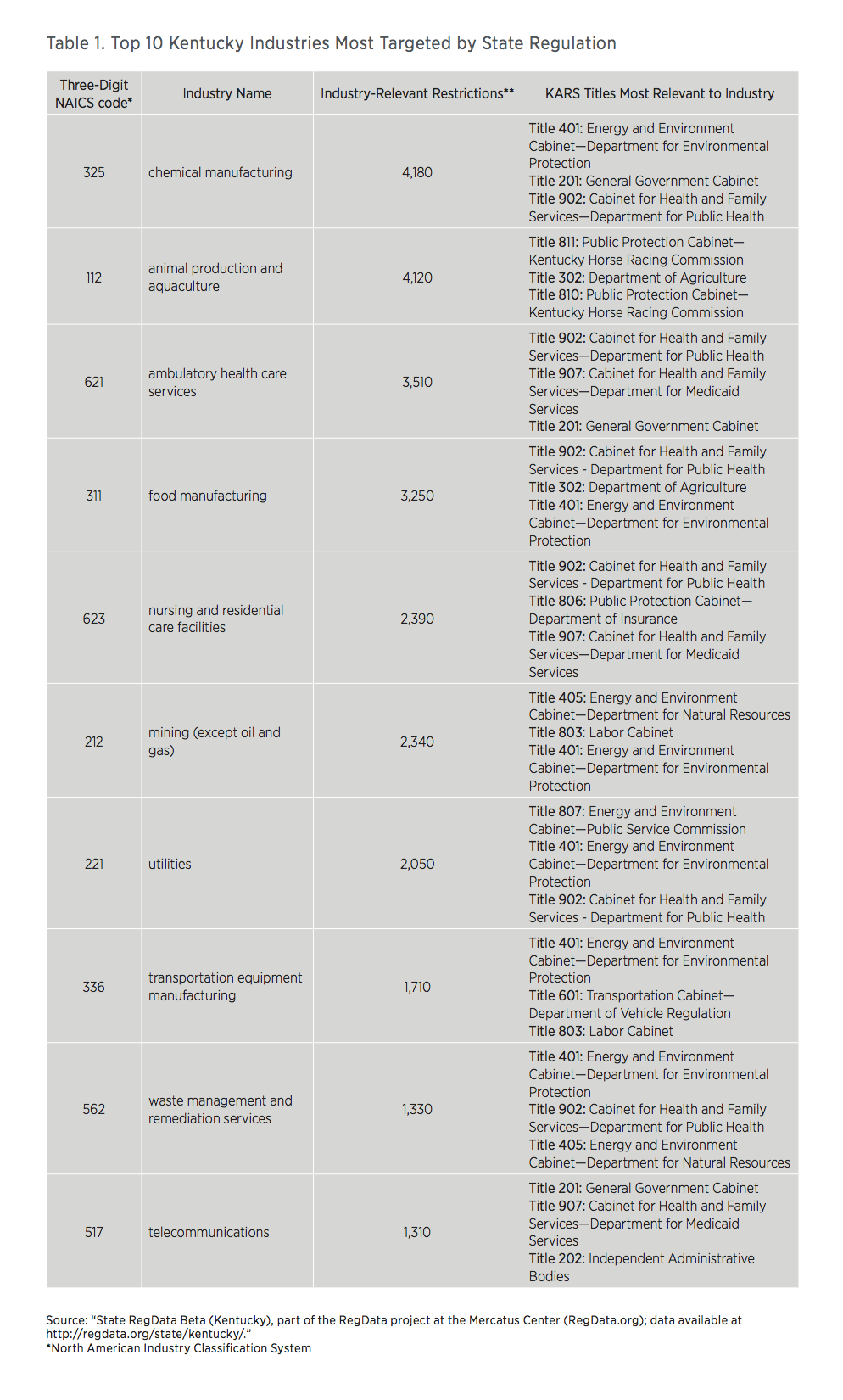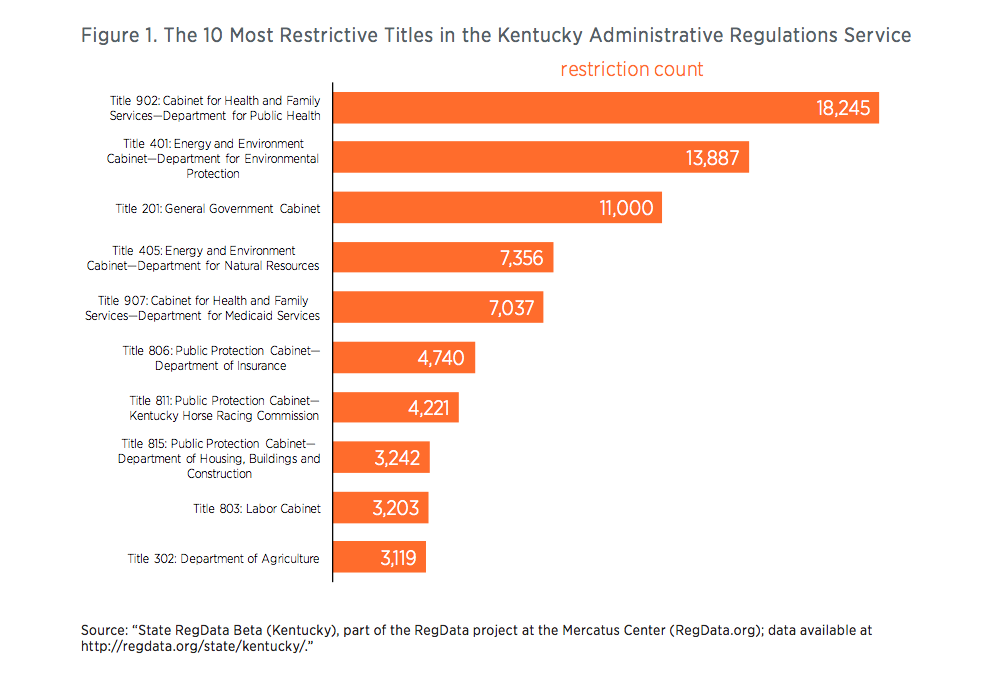Federal regulation tends to attract the most headlines. But it is important to remember that the 100 million words and over 1 million restrictions in the CFR are just the tip of the iceberg when it comes to the true scope of regulation in the United States.
In 2012, the US Code of Federal Regulations (CFR) contained over 103 million words. It would take an ordinary person almost three years to read the entire code. The sheer size of the CFR poses a problem not just for the individuals and small businesses that want to stay in compliance with the law, but also for anyone interested in understanding the consequences of this massive system of rules.
In addition to the enormous body of federal regulation, states also have sizable regulatory codes. For example, the Kentucky regulatory code, known as the Kentucky Administrative Regulations and published as the Kentucky Administrative Regulations Service (KARS), contained over 4,700 individual regulations in 2015. Complex bodies of code like the CFR and the KARS are difficult to grasp without help. Researchers at the Mercatus Center at George Mason University have developed a tool known as RegData—a text analysis program capable of scanning lengthy bodies of legal text—that captures information in minutes that would take an ordinary person hours, weeks, or even years.
For example, RegData can quantify how much regulation exists by counting the number of restrictions in regulatory code. Restrictions are words that signify legal constraints on the public’s activities. These are words and phrases like “shall,” “must,” “may not,” “prohibited,” and “required.” In 2014, there were over 1.08 million restrictions in the CFR. RegData reveals that the 2015 KARS contained 6.6 million words and 129,575 restrictions. It would take an individual 367 hours—or just over 9 weeks—to read the entire KARS. That’s assuming the reader spends 40 hours per week reading and reads at a rate of 300 words per minute.
RegData also allows researchers to identify the industries most targeted by regulation by connecting key words relevant to industries with restriction counts. Then, information on industry-relevant restrictions can be used to generate an index of the industries most singled out by Kentucky regulatory agencies. As listed in table 1, the top three industries with the highest industry-relevant restriction counts in the 2015 KARS are chemical manufacturing, animal production and aquaculture, and ambulatory healthcare services. Not surprisingly, the chemical manufacturing industry will find many rules relevant to its industry in Titles 401 and 902 of the KARS, which are written by the Kentucky Department of Environmental Protection and the Kentucky Department of Public Health, respectively. Animal production and aquaculture is an industry targeted by regulators like the Kentucky Horse Racing Commission, which shouldn’t be a surprise given the importance of the Kentucky Derby and horseracing in general to the Commonwealth of Kentucky.
Titles of the KARS are named based on the regulatory cabinet or department that writes the rules housed within the title. Figure 1 shows that in 2015, Title 902, which contains rules from the Department of Public Health, contained over 18,000 restrictions. This was by far the largest title in the KARS. Coming in second was Title 401, from the Department of Environmental Protection, which contained over 13,800 restrictions.
Federal regulation tends to attract the most headlines. But it is important to remember that the 100 million words and over 1 million restrictions in the CFR are just the tip of the iceberg when it comes to the true scope of regulation in the United States. States like Kentucky write millions of additional words of regulation and hundreds of thousands of additional restrictions. These state-level requirements carry the force of law to restrict individuals and businesses just as much as federal ones do.
Researchers are only beginning to understand the consequences of the massive and growing federal regulatory system in the United States. Meanwhile, the effects of state regulation remain largely unknown. If the snapshot of Kentucky regulation in 2015 is a good indicator, then the states are also active regulators, suggesting the true impact of regulation on society is far greater than that of federal regulation alone.



